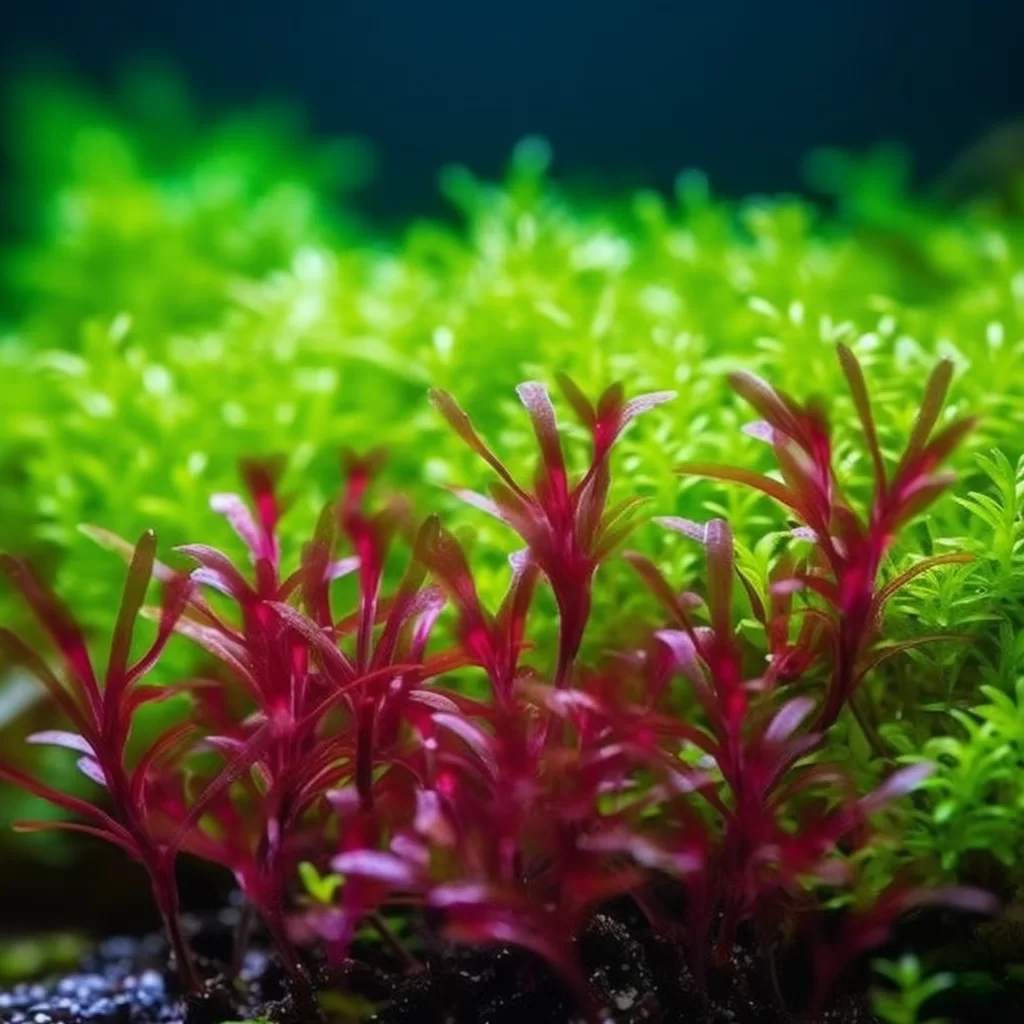Story of Day :
Contents
The Complete Guide to Rotala Aquarium Plant: Care Tips and More
Are you looking for a stunning aquarium plant that can add a pop of color to your aquatic setup? Look no further than the Rotala aquarium plant! This vibrant and hardy aquatic plant is an excellent option for beginners and experienced aquarists alike.
In this article, we’ll take a closer look at this beautiful plant, including its care requirements, propagation tips, and much more.
What is Rotala Aquarium Plant?
Rotala aquarium plants are native to Southeast Asia but are now widely available in the aquarium trade worldwide.
These aquatic plants feature colorful leaves that range from bright green to pink or red hues.
Types of Rotala Aquarium Plants

There are several varieties of Rotala species commonly used in the aquarium hobby.
Some popular types include:
- Rotala indica – also known as Indian toothcup or Ammannia auriculata.
- Rotala rotundifolia – features round leaves with bright green foliage.
- Rotala macrandra – one of the most colorful varieties with deep red or pink hues.
Care Requirements for Rotala Aquarium Plant
One reason why many aquarists love growing Rotalas is because they’re relatively easy to care for compared to other exotic species.
Here are some essential care tips you need to bear in mind when keeping these plants:

Lighting
To encourage healthy growth, ensure your rotalas receive moderate lighting levels ranging between 0.5 watts per liter (W/L) up to about 2.0 W/L for brightly colored species.
Water Parameters
Rotalas appreciate clean and nutrient-rich water conditions to thrive.
These plants prefer a pH range of 6.0 to 7.5, water hardness between 5-15 dGH, and temperatures ranging from 68°F/20°C to 82°F/28°C.

Substrate
While Rotalas can grow in gravel or sand substrate, you can achieve better results by adding an organic soil layer underneath your aquarium gravel or using dedicated aquatic plant substrates like Flourite, ADA Aquasoil Amazonia or Tropica Substrate.
Propagation Tips For Rotala Aquarium Plant
Rotala aquarium plants reproduce quickly through stem cuttings with the following steps:

- Cut a healthy stem near the top of your Rotala plant.
- Remove lower leaves from the cutting’s base before planting it in your substrate.
- Avoid burying too much of the cutting; instead, leave around one-quarter inch of stem above the substrate.
- Maintain sufficient lighting levels while providing optimal water parameters such as temperature and pH levels.
Fun Fact: One advantage that Rotala possesses over other aquatic plants is their ability to adapt and regrow even if you mistakenly trim them during pruning!
Tips for Troubleshooting Common Issues with Rotala Aquarium Plant
- Rotting stems:Sometimes, rotala stems can lose their vibrancy or start rotting when planted too deep into your substrate.
However,you may wish to trim the unhealthy parts and replant the healthy stems to avoid losing your plant entirely.
- Algae Overgrowth: Due to their nutrient requirement, Rotalas can be prone to algae overgrowth.
You can use a combination of liquid fertilizers and CO2 injection systems, or introduce algae-eating species like Amano shrimp, Siamese Algae Eaters (SAE), or nerite snails.
- Yellowing leaves:The yellowing of older leaves may be due to a lack of sufficient iron in the aquarium water.
To prevent this problem, you may add liquid fertilizers enriched with nutrients such as nitrate and phosphate
In Conclusion
Rotala aquarium plant is an excellent addition to any aquatic setup.
It’s hardy, relatively easy-to-grow nature makes it an ideal option for aquarists looking for stunning freshwater plants that don’t require too much maintenance.
Whether you’re a beginner or experienced hobbyist,taking care of rotalas requires providing optimal light levels,nutrient-dense substrate while maintaining stable water parameters within your aquarium.
We hope that our guide has provided valuable insights on how best to care for these beautiful plants so that they thrive in your aquatic environment!